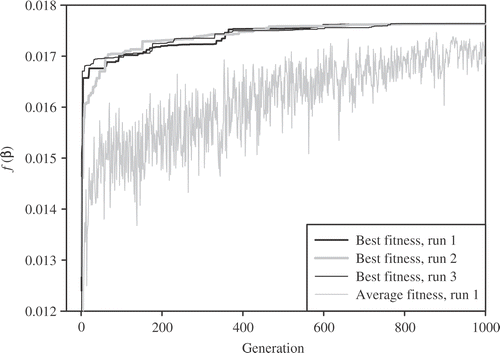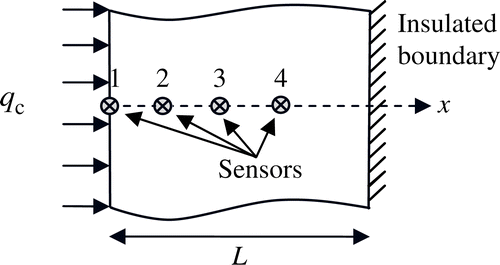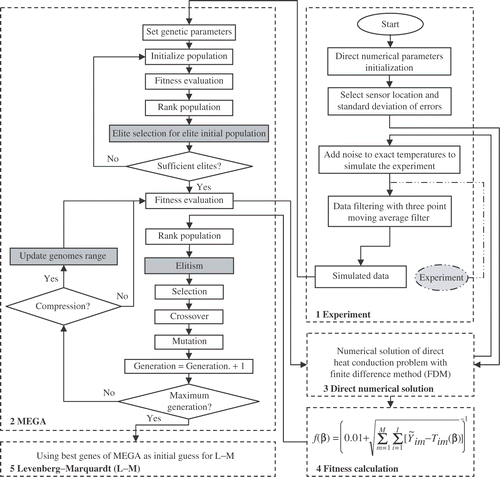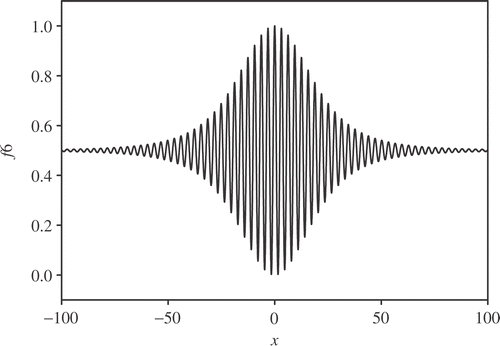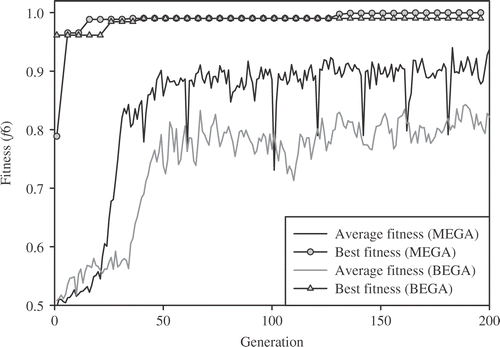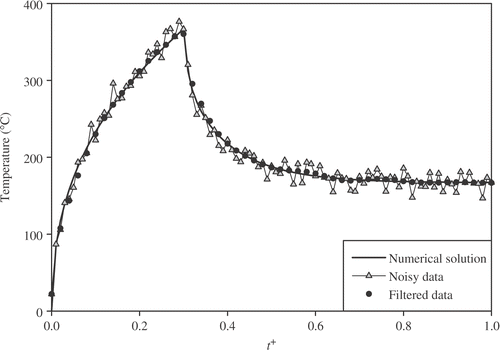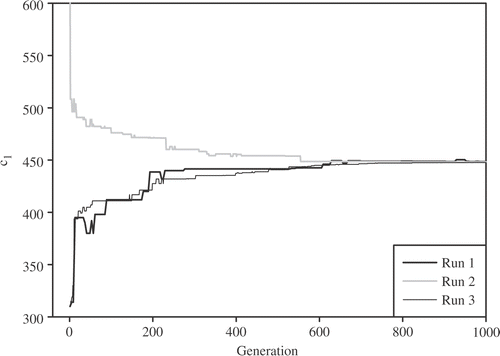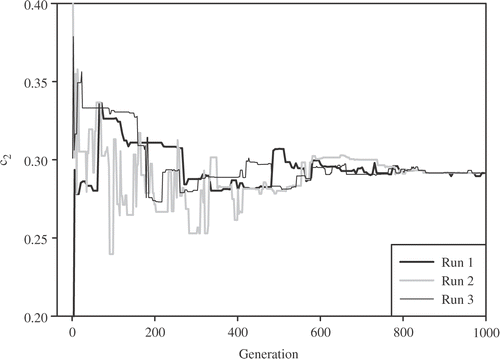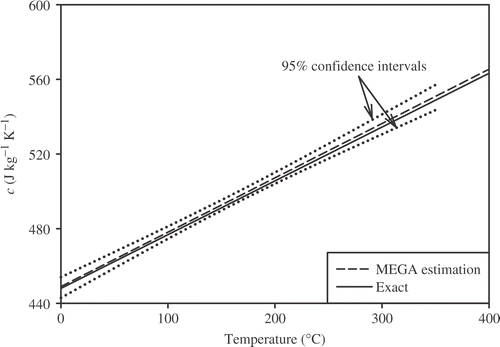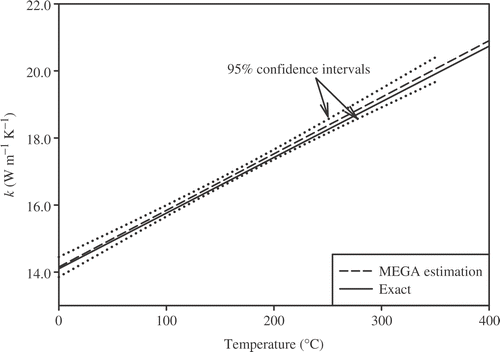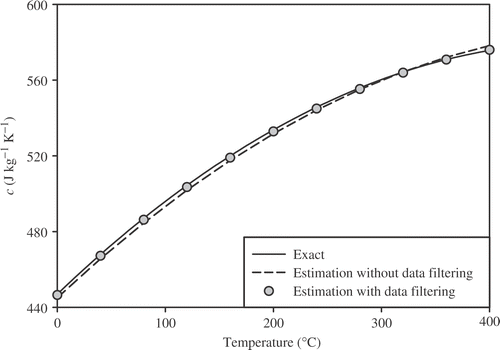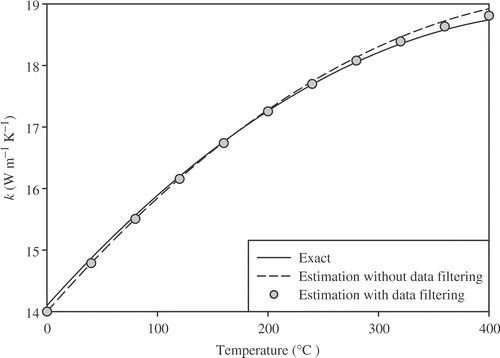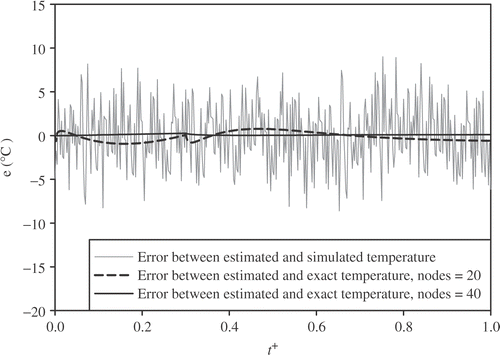Figures & data
Figure 5. Simulated measurements of temperature at the heated surface and some internal locations for .
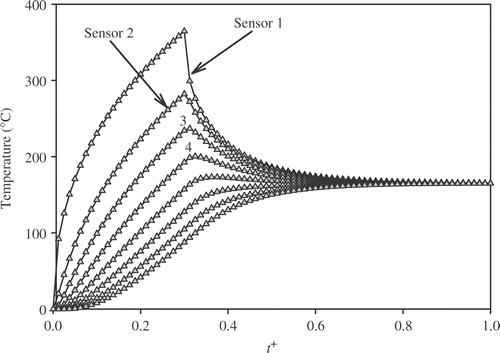
Figure 8. Effect of the heating duration on the dimensionless D-optimality criterion for estimating parabolic TDTPs.

Table 1. Estimation of linear TDTPs using MEGA and L–M method with genetic parameters: ns = 100, ng = 1000, Pc = 0.99, Pm = 0.05, Pr = 0.9, and rc = 0.9 for σ = 0 and σ = 0.01Tmax
Table 2. Estimation of parabolic TDTPs using MEGA and L–M method with genetic parameters: ns = 100, ng = 1000, Pc = 0.99, Pm = 0.05, Pr = 0.9, and rc = 0.9 for σ = 0.01Tmax
Table 3. Estimation of linear and parabolic TDTPs with respect to the different functional forms of the estimates
Figure 9. Average and the best fitness evolutions of function f(β) from the MEGA for parabolic TDTPs with σ = 0.01Tmax.
